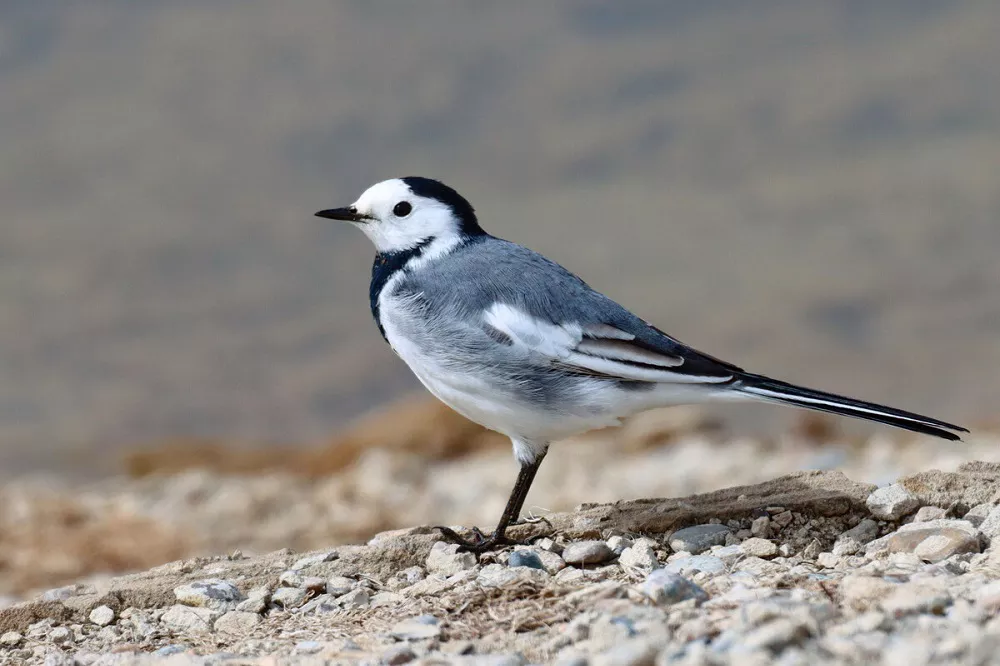The natural world is teeming with an incredible variety of birds, each possessing unique characteristics and adaptations. Among these avian wonders is the charismatic Pied Wagtail. With its distinctive plumage and charming behavior, this small passerine bird captures the attention of birdwatchers and nature enthusiasts alike. In this article, we will delve into the fascinating world of the Pied Wagtail, exploring its physical attributes, habitat, behavior, diet, breeding patterns, and conservation status.
Physical Attributes:
The Pied Wagtail measures approximately 17-19 centimeters in length, making it one of the smaller members of the wagtail family. Its plumage is predominantly black and white, with a contrasting black mantle, wings, and head, while the underparts showcase a striking white coloration. The wagging of its long, slender tail is a distinctive behavior that gives the species its name. Additionally, the Pied Wagtail displays a slender body, dark legs, and a slender bill that aids in capturing its preferred prey.
Habitat and Distribution:
Pied Wagtails can be found across various regions of Europe, Asia, and North Africa. They are primarily non-migratory birds, although some populations undertake short-distance migrations during harsh weather conditions. These adaptable birds thrive in diverse habitats, including urban areas, parks, gardens, farmlands, wetlands, and riverbanks. Their ability to adjust to human-altered environments has made them a common sight in towns and cities, where they forage for food in open spaces and nest on buildings or bridges.
Behavior and Diet:
Pied Wagtails are known for their lively and animated behavior. One of their most recognizable traits is their incessant tail wagging, which is believed to serve multiple purposes like communication and hunting strategy. They are agile aerial predators, feeding on a diet primarily composed of insects, spiders, worms, and small invertebrates. The wagtail’s slender bill allows it to snatch prey from the ground or pluck flying insects from mid-air with impressive accuracy.
Breeding Patterns:
During the breeding season, Pied Wagtails establish territories in areas with suitable nesting sites and abundant food sources. Males engage in elaborate courtship displays, including the iconic “tail-shivering” behavior where they raise their tails and shake them rapidly. The female selects a mate based on these displays and nest-building abilities. Nesting sites vary greatly, but commonly include crevices in buildings, holes in walls, tree hollows, or even among roof shingles. The female constructs the cup-shaped nest using grass, leaves, moss, and feathers, and typically lays a clutch of 4-6 eggs. Both parents share incubation duties and care for the chicks until they fledge.
Conservation Status:
The Pied Wagtail has a widespread distribution and stable population, leading to its classification as a species of “Least Concern” by the International Union for Conservation of Nature (IUCN). However, the species does face localized threats, such as habitat loss due to urbanization, agricultural intensification, and pollution. It is important to maintain suitable nesting sites and preserve diverse habitats to ensure the long-term survival of this enchanting bird.
Conclusion:
In conclusion, the Pied Wagtail is an intriguing bird that captivates observers with its distinctive appearance and lively behavior. From its black and white plumage to its constant tail wagging, this small passerine brings joy to those fortunate enough to encounter it. Its adaptability to urban environments demonstrates the resilience of nature and serves as a reminder of the importance of preserving biodiversity even in human-dominated landscapes. By understanding and appreciating the fascinating world of the Pied Wagtail, we can contribute to its conservation and ensure that future generations have the opportunity to witness its beauty firsthand.


 Facebook
Facebook  Instagram
Instagram  Youtube
Youtube 